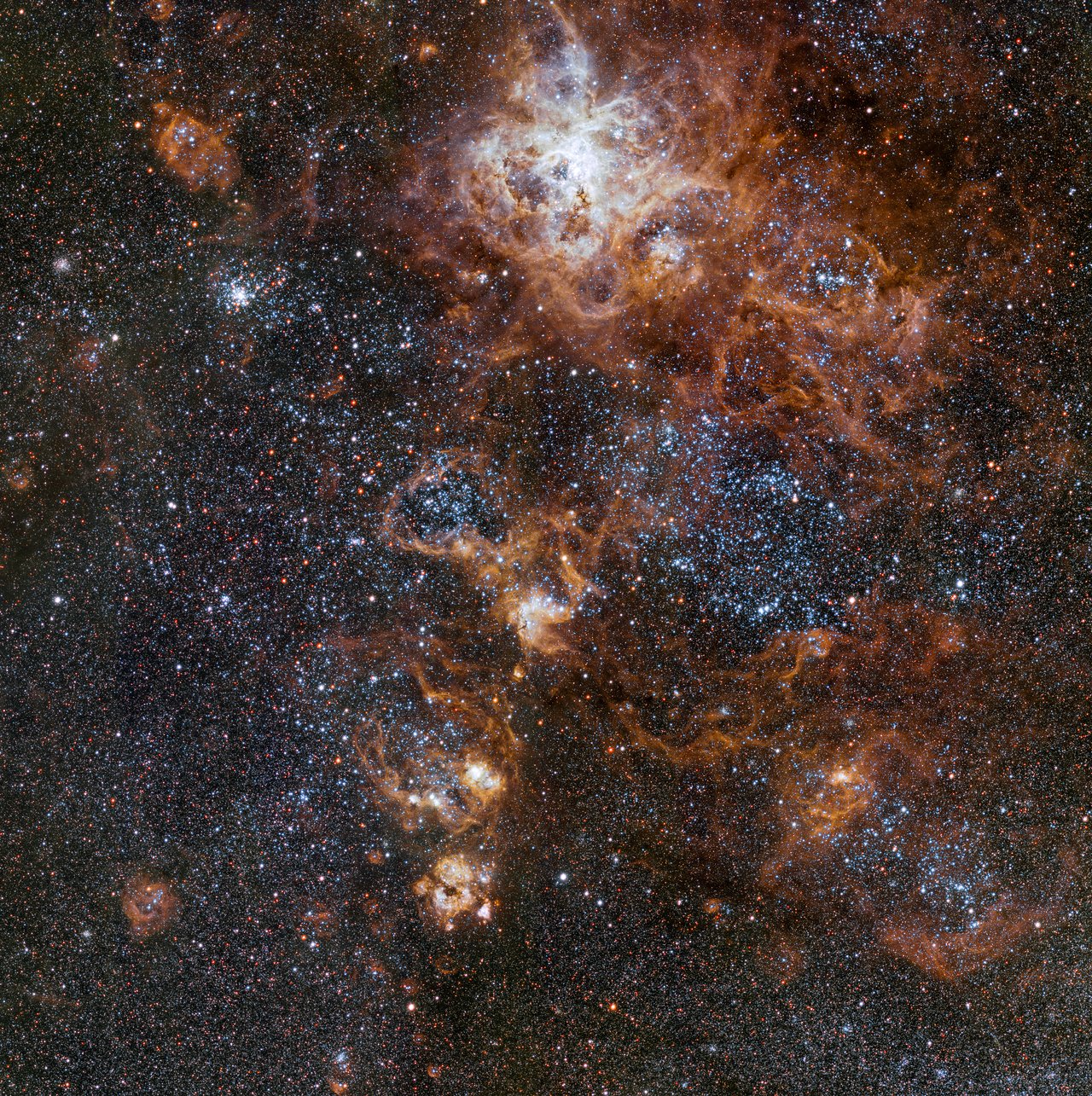A Tarantula and Seahorse Make Up These Dazzling Nebulas
Astronomers have captured a striking new image of the Tarantula Nebula that highlights its abundance of stars and stunning luminosity.
Orbiting our Milky Way galaxy is the Large Magellanic Cloud, a dwarf galaxy. The most remarkable feature of this galaxy is the Tarantula Nebula — an enormous cloud of dust and gas that holds some of the most massive stars astronomers have ever detected. Using the VLT Survey Telescope (VST) at the European Southern Observatory's (ESO) Paranal Observatory in Chile, astronomers captured a new, mesmerizingly detailed image of the nebula.

However, this image does more than just showcase the beauty of the Tarantula Nebula, which can be seen at the top of the image. The photo also reveals just how many star clusters call this nebula, also known as 30 Doradus, home. [Cosmic Spider: Amazing Tarantula Nebula Photos]
At the bright center of the Tarantula Nebula is the giant star cluster NGC 2070, whose core holds some of the largest and most luminous stars humans have ever observed, according to a statement from ESO. Stars 300 times the mass of the sun have been found in the Tarantula Nebula. In fact, stars that are twice as massive as astronomers previously thought could form have been found in this nebula. These stellar characteristics make the Tarantula Nebula, the diameter of which spans 1,000 light-years, a unique and remarkable region.
In addition to the Tarantula Nebula, whose filaments evoke the image of a spider, this image also harbors a seahorse-shaped structure. The "Seahorse of the Large Magellanic Cloud" is actually a star cluster and bright nebula called NGC 2074. Seen here at the center of the image, this structure is about 20 light-years long — almost five times the distance between the sun and Alpha Centauri, our closest stellar neighbor, according to the statement from ESO. Over time, however, as more stars form in the cluster, light and wind from the stars will blow away the dust pillars that make up NGC 2074's unique structure, the statement from ESO said.
As telescopic technology advances, so does our view of the universe. This image was made possible not only by the VST, but also by its 256-megapixel camera, called OmegaCAM, which used colored filters to make the red glow of ionized hydrogen in the galaxy prominently visible.
Email Chelsea Gohd at cgohd@space.com or follow her @chelsea_gohd. Follow us @Spacedotcom, Facebook and Google+. Original article on Space.com.
Get the Space.com Newsletter
Breaking space news, the latest updates on rocket launches, skywatching events and more!
Join our Space Forums to keep talking space on the latest missions, night sky and more! And if you have a news tip, correction or comment, let us know at: community@space.com.

Chelsea “Foxanne” Gohd joined Space.com in 2018 and is now a Senior Writer, writing about everything from climate change to planetary science and human spaceflight in both articles and on-camera in videos. With a degree in Public Health and biological sciences, Chelsea has written and worked for institutions including the American Museum of Natural History, Scientific American, Discover Magazine Blog, Astronomy Magazine and Live Science. When not writing, editing or filming something space-y, Chelsea "Foxanne" Gohd is writing music and performing as Foxanne, even launching a song to space in 2021 with Inspiration4. You can follow her on Twitter @chelsea_gohd and @foxannemusic.









